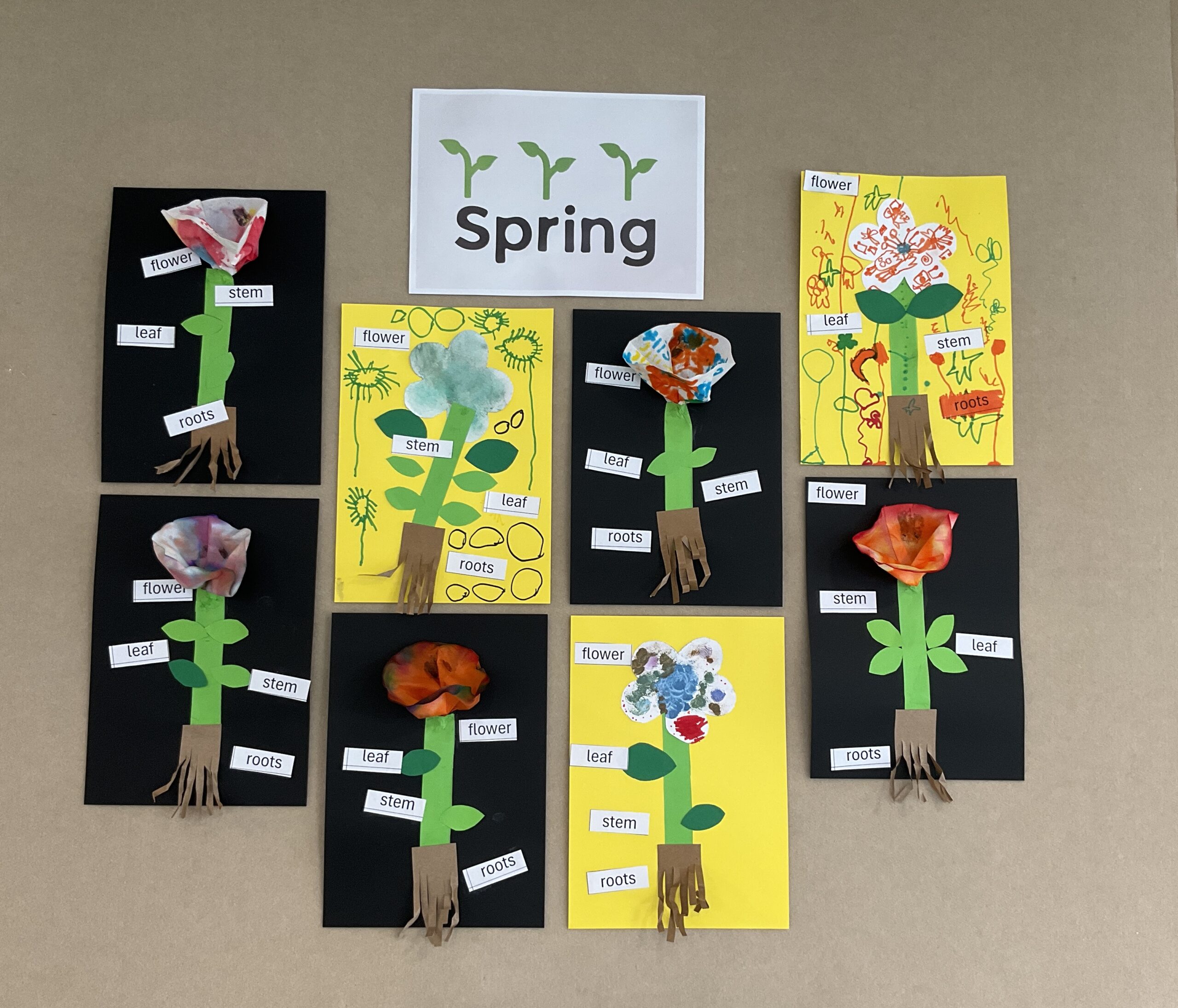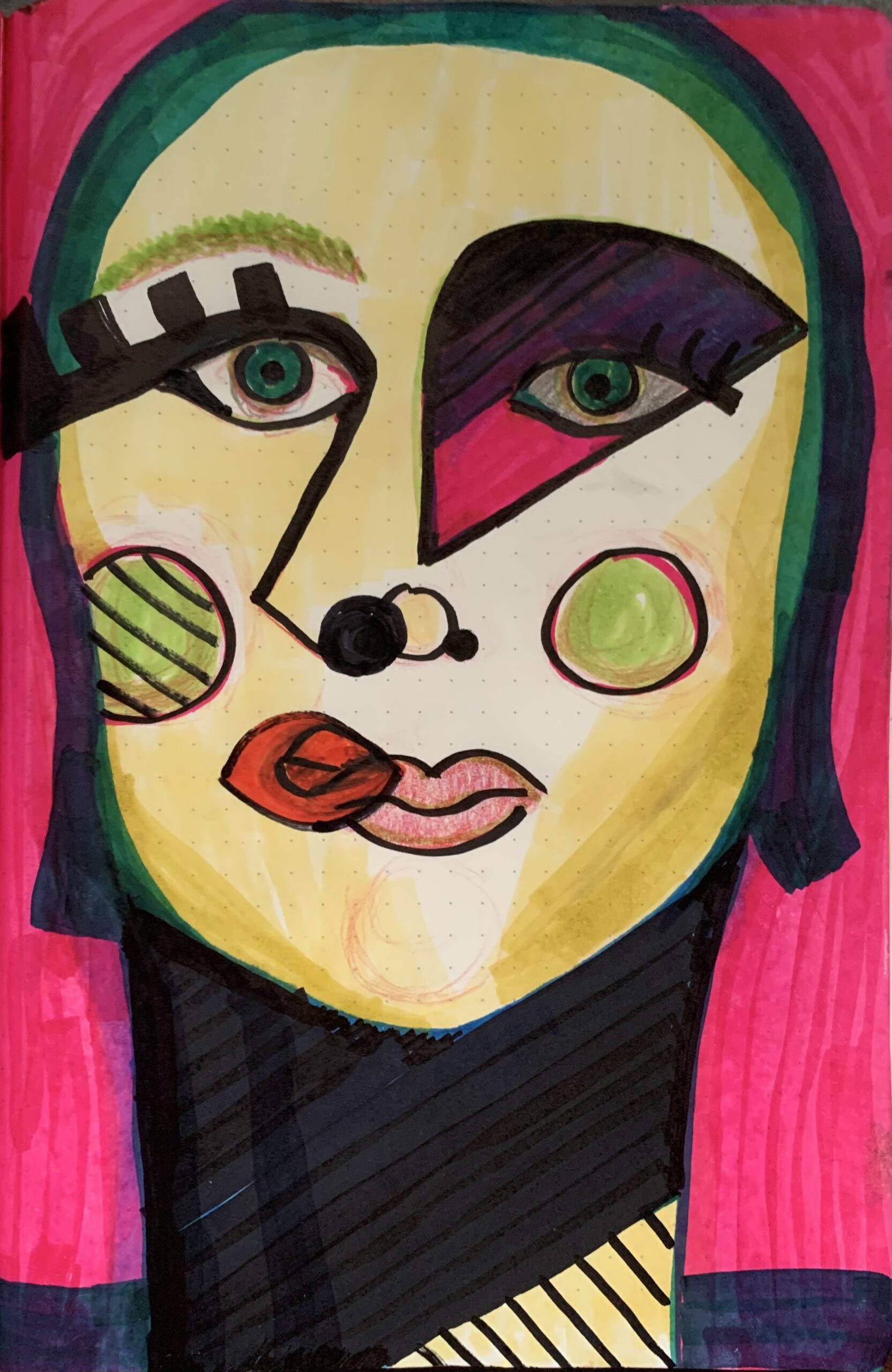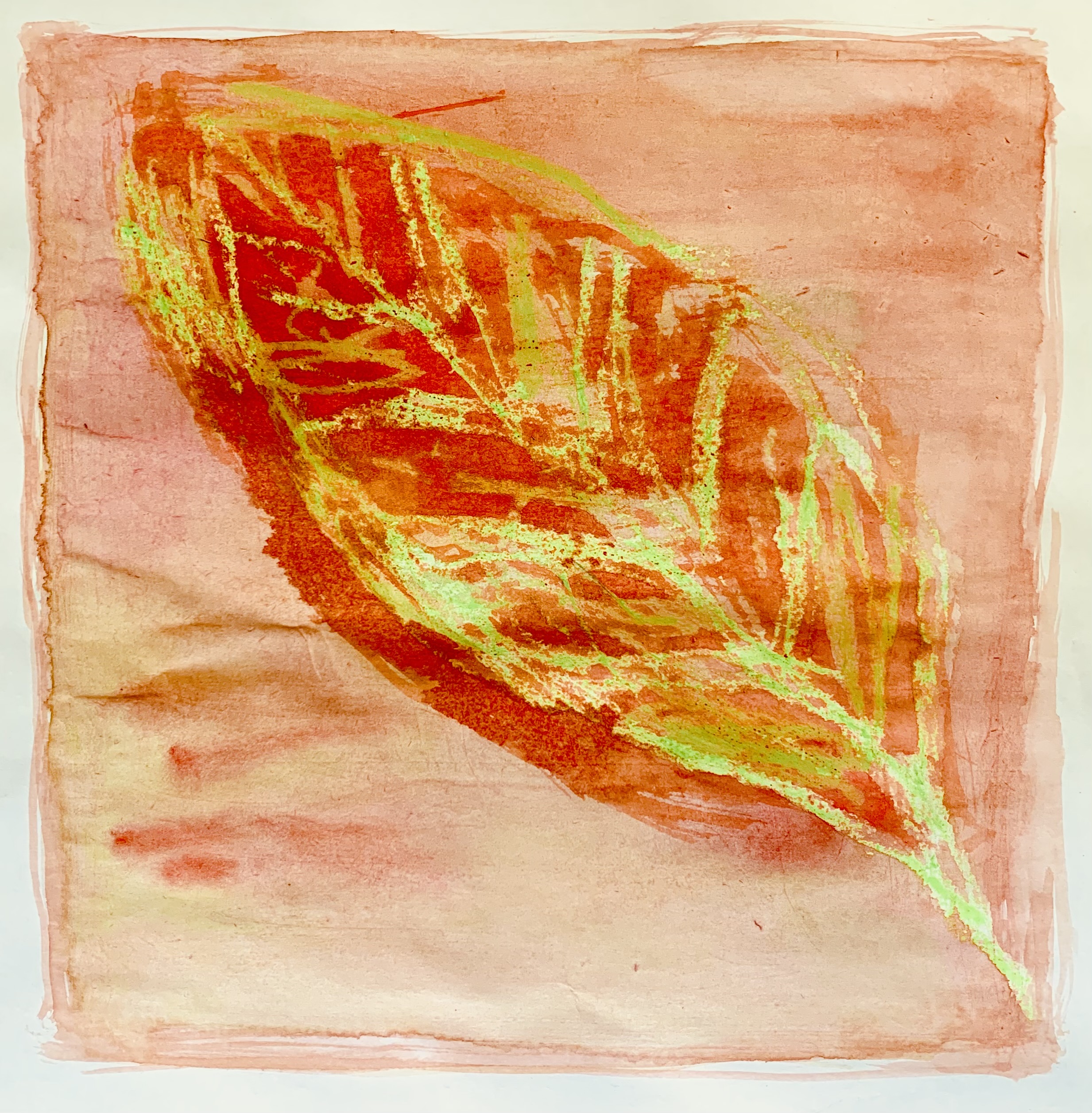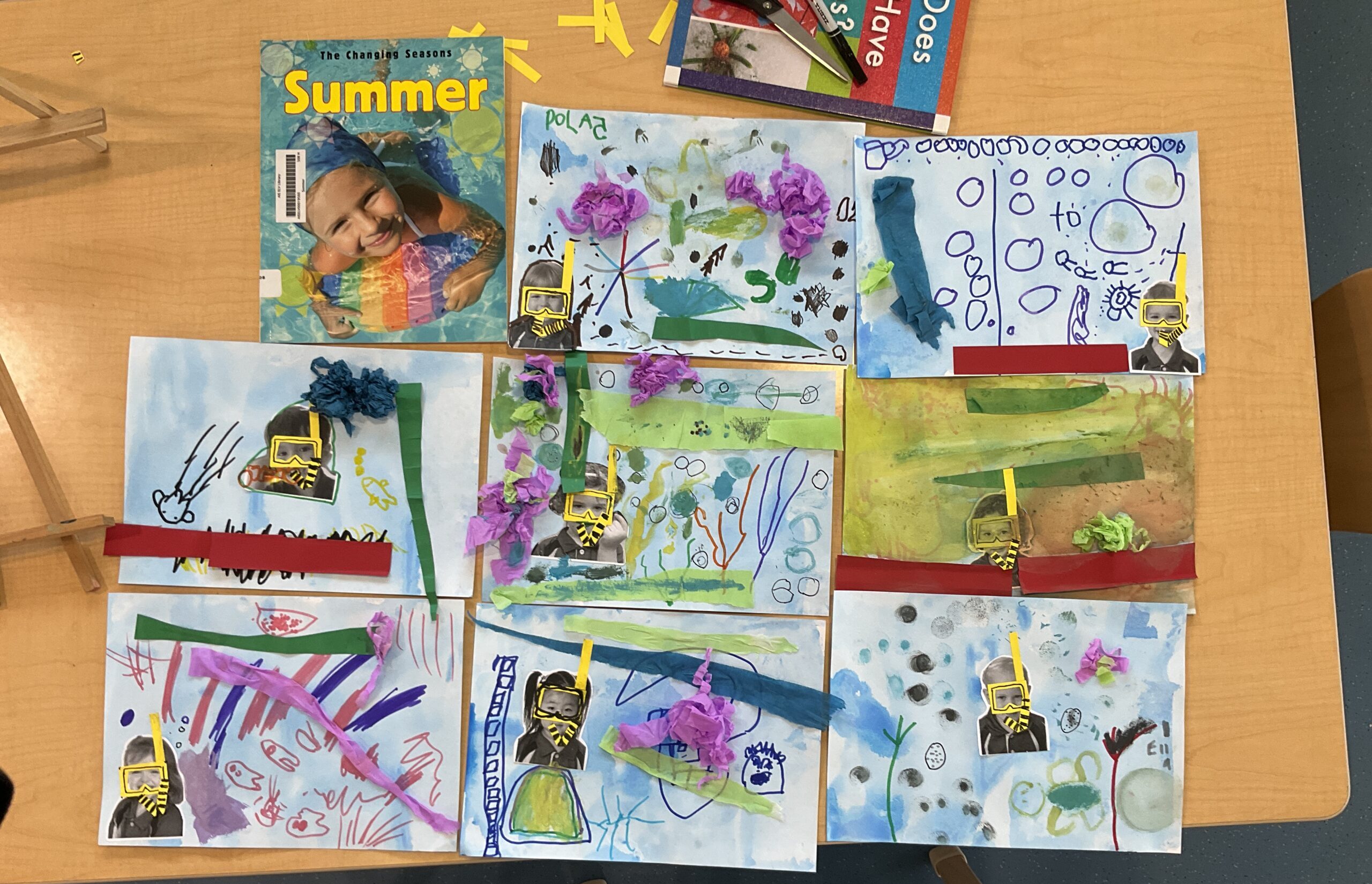🌸 Art Meets Science: Coffee Filter Flowers & Flower Anatomy Collage 🌱
This week, our art lesson blossomed into an exploration of spring, nature, and the changing seasons—all through a colorful and creative project that connected beautifully with our IB theme: How the World Works. As part of our ongoing inquiry into the natural world, students dove into the wonders of plant life with this hands-on activity that combines art, science, and inquiry-based learning.

🌎 Inquiry Focus:
As spring emerges and nature begins to bloom around us, we’ve been asking:
- What changes do we see in spring?
- How do plants grow and survive?
- What roles do different parts of a plant play?
- How do flowers help the natural world work?
These questions helped launch our creative investigation through art!

🎨 Materials You’ll Need:
- White coffee filters (1–2 per flower)
- Washable markers
- Spray bottle with water
- Construction paper (green + other colors)
- Glue sticks
- Scissors
- Printed labels: flower, stem, leaf, roots
🖍️ Step 1: Create Your Flower Petals
Flatten a white coffee filter and let students color it with washable markers. Bright spring colors work best! They can use dots, lines, or fill the whole filter with color—whatever inspires them.
💦 Step 2: Water & Wonder
Once colored, spray the filter lightly with water and watch the colors blend like magic! This is a great moment to talk about how water moves through materials—just like it does through a real plant.
Open up the filters, shape them into blooms, and let them dry while students move to the next steps.
✂️ Step 3: Assemble the Flower
Using construction paper, students cut and glue these parts:
- Stem – a long green rectangle
- Leaf – an oval or teardrop shape
- Roots – thin strips or fringes at the bottom
Once the coffee filter is dry, glue it at the top as the flower head.
🏷️ Step 4: Label and Learn
Provide printed word labels: flower, stem, leaf, roots. Students glue these next to the correct parts on their collage. As a class, we explored what each part does and how it helps the plant live and grow—connecting to our broader inquiry into how plants work and why they are important in nature.
🌼 Extend the Inquiry:
Encourage students to observe plants in their own environment. Ask them:
- What parts of the plant can you see?
- What might be happening underground?
- How do weather and seasons affect plants?
This not only deepens understanding but encourages curiosity and observation, key to learning about how the world works.
💡 Teacher Tip:
Invite students to decorate their collages with elements from nature—like the sun, rain, bugs, or butterflies. This connects art to ecology and reinforces the seasonal changes we observe in spring.

📷 Celebrate the Learning!
Display the finished flowers on a bulletin board under the title:
“How the World Works: Spring Blooms & Scientific Thinking” 🌼🔍
This project is a wonderful way to bring art, science, and inquiry together in a joyful and educational celebration of spring. Let your classroom bloom with discovery!






















